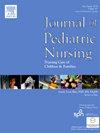父母对高度依赖的脑瘫患儿疼痛检测、评估和管理的看法:一项横断面研究
IF 2.3
4区 医学
Q2 NURSING
Journal of Pediatric Nursing-Nursing Care of Children & Families
Pub Date : 2025-09-22
DOI:10.1016/j.pedn.2025.09.009
引用次数: 0
摘要
父母了解孩子的痛苦,这对有效管理至关重要。护士在向家长提供疼痛教育方面发挥着重要作用。本研究旨在探讨高度依赖脑瘫儿童(CP)的父母在家中处理疼痛时所面临的实践和挑战。DesignA对98名患有CP的儿童、青少年和年轻人的父母进行了一项横断面研究,他们完成了关于疼痛强度、家庭管理以及他们的知识和感知的问卷调查。结果父母报告其孩子过去有中度疼痛,现在有轻度疼痛(平均= 4.17±2.8;2.01±2.79)。家长表现出中等程度的知识和误解(平均= 27.5±13.5 / 64)。大多数使用多种非药物方式(平均= 9.64±3.7),并发现它们最多是中等有效(平均= 6.9±3.2;0-10)。几乎所有提供非处方(OTC)镇痛药(96%),25提供处方镇痛药。适度模型显示,接受疼痛教育的父母更有可能提供处方镇痛药(OR = 14, 95% CI 2.21-276.4),但仅适用于完全语言儿童的父母(p = 0.02)。结论:家长通常采用多模式在家管理孩子的疼痛;然而,他们的孩子却经常处于痛苦之中。这可能源于父母在疼痛检测和管理方面的知识差距。对实践的启示有效的护理实践包括将家长的知识与护士的专业技能和当前循证实践相结合的合作伙伴关系。这样的伙伴关系可以确保父母获得可靠的信息,个性化的教育,并支持为他们的孩子提供适合他们需要的CP疼痛缓解措施。本文章由计算机程序翻译,如有差异,请以英文原文为准。
Parental perspectives on pain detection, assessment, and management in their highly dependent children with cerebral palsy: A cross-sectional study
Parents understand their children's pain, which is vital for effective management. Nurses play a significant role in providing parents with pain education. This study aimed to examine the practices and challenges that parents of highly dependent children with cerebral palsy (CP) face when managing pain at home.
Design
A cross-sectional study of ninety-eight parents of children, adolescents and young people with CP completed questionnaires exploring pain intensity, home management, and their knowledge and perceptions.
Results
Parents reported past moderate pain and mild present pain in their children (mean = 4.17 ± 2.8; 2.01 ± 2.79 out of 10, respectively). Parents exhibited moderate knowledge and misconceptions (mean = 27.5 ± 13.5 out of 64). Most utilized numerous non-pharmacological modalities (mean = 9.64 ± 3.7) and found them to be, at most, moderately effective (mean = 6.9 ± 3.2; 0–10). Almost all provided over-the-counter (OTC) analgesics (96 %), and 25 offered prescription analgesics. A moderation model revealed that parents who received pain education were more likely to provide prescription analgesics (OR = 14, 95 % CI 2.21–276.4), but only in parents of fully verbal children (p = 0.02).
Conclusions
Parents often utilize a multimodal approach to managing their children's pain at home; however, their children frequently remain in pain. This may stem from parental knowledge gaps regarding pain detection and management.
Implications for practice
Effective nursing practice involves a collaborative partnership that integrates parents' knowledge with nurses' specialized skills and current evidence-based practices. Such a partnership can ensure that parents receive reliable information, personalized education, and support to provide their children with CP pain relief measures tailored to their needs.
求助全文
通过发布文献求助,成功后即可免费获取论文全文。
去求助
来源期刊

Journal of Pediatric Nursing-Nursing Care of Children & Families
NURSING-PEDIATRICS
CiteScore
3.70
自引率
8.30%
发文量
291
审稿时长
65 days
期刊介绍:
Official Journal of the Society of Pediatric Nurses and the Pediatric Endocrinology Nursing Society (PENS)
The Journal of Pediatric Nursing: Nursing Care of Children and Families (JPN) is interested in publishing evidence-based practice, quality improvement, theory, and research papers on a variety of topics from US and international authors. JPN is the official journal of the Society of Pediatric Nurses and the Pediatric Endocrinology Nursing Society. Cecily L. Betz, PhD, RN, FAAN is the Founder and Editor in Chief.
Journal content covers the life span from birth to adolescence. Submissions should be pertinent to the nursing care needs of healthy and ill infants, children, and adolescents, addressing their biopsychosocial needs. JPN also features the following regular columns for which authors may submit brief papers: Hot Topics and Technology.
 求助内容:
求助内容: 应助结果提醒方式:
应助结果提醒方式:


